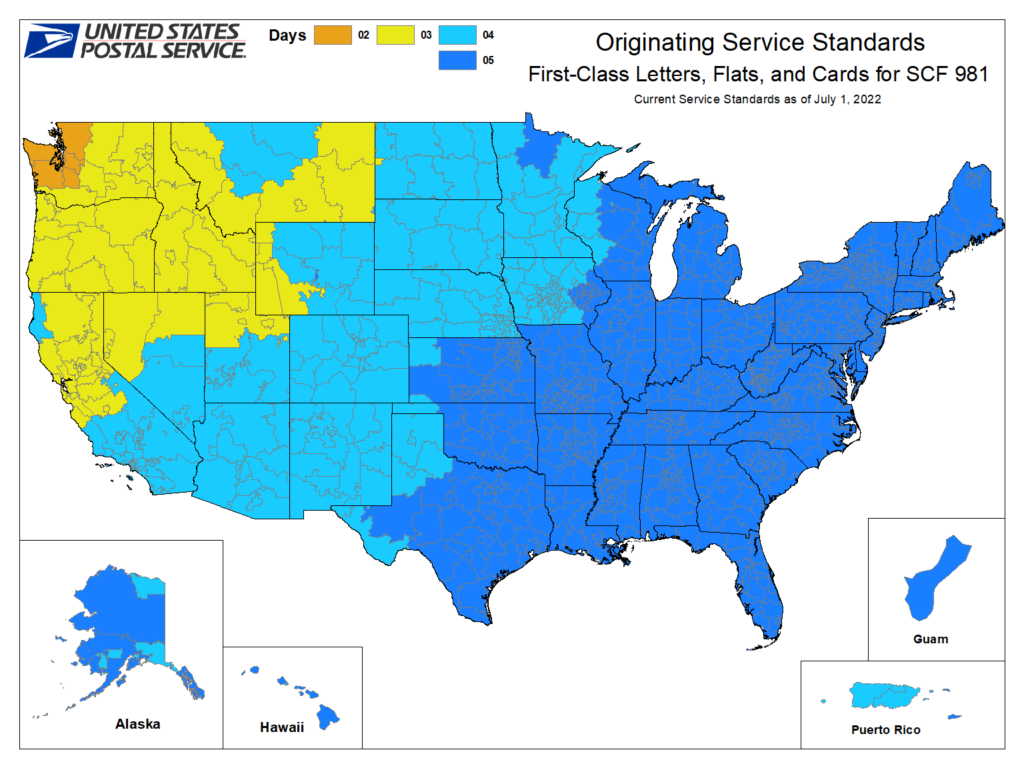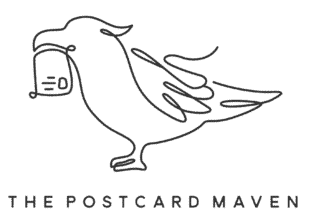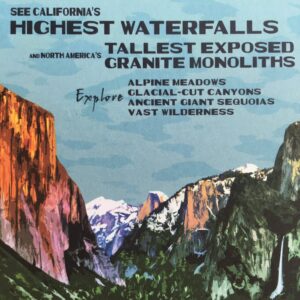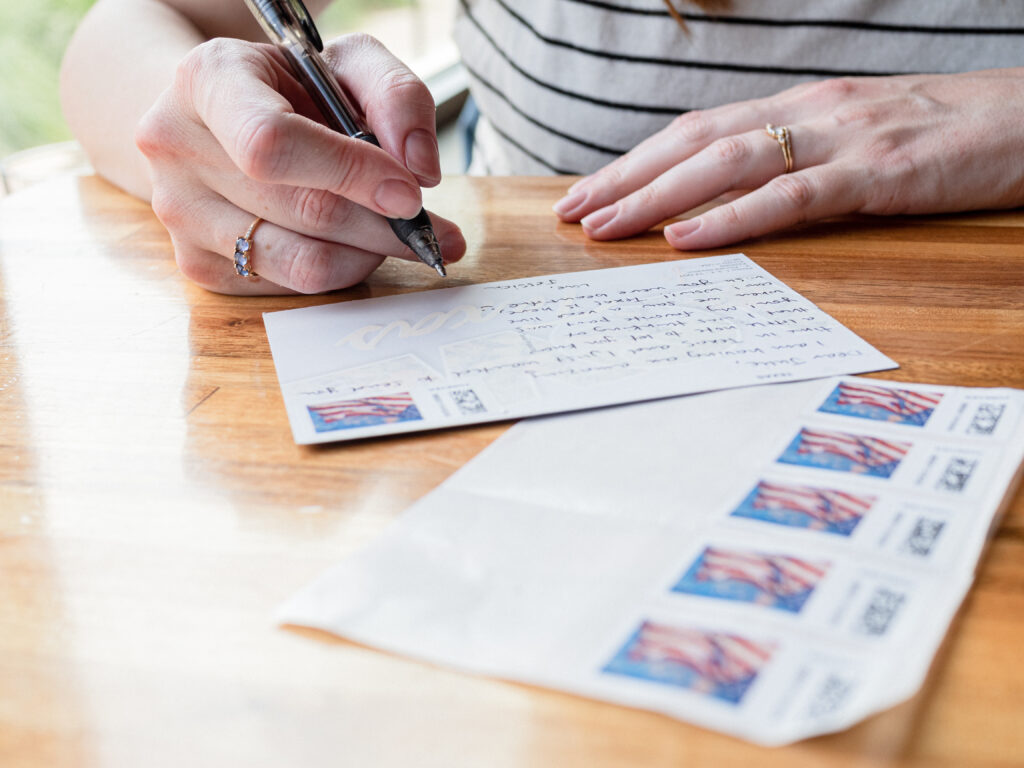Postcard Writing Guides
How to Send a Postcard
The postcard was first introduced in Austria in 1869 with the goal of making short messages cheaper, faster, and easier to send. At the time, they cost half as much as a letter, omitted the envelope, and were blank with room for the recipient’s address on the front of the card and a short message on the back.
By comparison with other snail mail, today’s postcards still to achieve all three goals of being cheaper, faster, and easier to send. They cost about three-quarters of current letter prices in the United States today and remain quick and simple to write, generally requiring less than 15 minutes of your time.
Postcards can vary widely in size, subject, and style, but they all work in the same basic way. Here’s everything you need to know about writing and sending a postcard.
What You’ll Need to Send a Postcard
To send a postcard, you’ll need the postcard itself, a writing implement, a postage stamp or stamps, the recipient’s address, and access to a mailbox or post office.
What Defines a Postcard?
To be considered a postcard, both size and shape matter. When mailing through the United States Postal Service (USPS), to qualify for mailing at the First-Class Mail (FCM) postcard price, your mailpiece must be “of uniform thickness and made of unfolded and uncreased paper or cardstock of approximately the quality and weight of a stamped card (i.e., a card available from the USPS).” It must also be:
- Rectangular
- At least 3.5 inches high x 5 inches long x 0.007 inch thick
- No more than 4.25 inches high x 6 inches long x 0.016 inches thick
- No more than 3.5 ounces
If your mailpiece does not meet the dimensions above, then the Postal Service considers it a letter and letter-size postage is charged. Letter-sized postage is generally one standard Forever stamp, while postcard postage means one standard postcard stamp. Both types of stamps can be purchased at any post office, and are sometimes sold in other places such as grocery stores, banks, and pharmacies. Many souvenir shops that sell postcards will also sell you the right number of stamps to go with them; just ask at the counter. You can buy postcard stamps online, too.
The best places to buy postcards are tourist attractions, bookstores, museum and gift shops, and online postcard stores. Most postcards include the following design elements:
- An image on the front.
- A mostly-blank back with space for a message on the left side, an address on the right side, and your postage stamp at the top right.
The most common dimensions for a postcard are 4” x 6”, but anything that stays within the limits above is acceptable. Postcards that exceed the maximum postcard dimensions can still be mailed, they just don’t qualify for postcard mailing rates and must be mailed at letter prices. For example, 5” x 7” is a popular postcard size that requires a letter stamp. I’ll get into postcard postage rates in more detail below.
Pro tips on postcard sizing:
- When measuring the length and height of a postcard, the length is the dimension “parallel to the address as read.”
- For postcards being mailed at letter prices (i.e. those that exceed the maximum allowable postcard dimensions above), the aspect ratio requirement that applies to letters must also be met. For any letter-sized postcard with an aspect ratio (length divided by height) of less than 1.3 or more than 2.5, a “non-machinable surcharge” means additional postage is required. This surcharge also applies to non-rectangular mailpieces (e.g. round or unusually-shaped postcards): It is added because automated postal service equipment cannot sort these postcards, meaning they have to be sorted by hand and thus are more expensive to process. As of this writing (August 2022), the current non-machinable surcharge is $0.39. Non-machinable surcharges do not apply to anything that meets the postcard size and shape requirements listed above.
- For business customers using the USPS’s commercial pre-sorted or automation First Class Mail postcard services (most often to send marketing postcards), the maximum commercial postcard size was increased to 6” x 9” in August 2021. This change does not apply to retail (non-business) customers.
The Best Writing Implements for Postcards
A pen, pencil, marker, or any other writing tool can be used to write a postcard. In fact, you don’t even necessarily need to write a message—you can sketch, draw, or decorate your postcard with stickers as you wish. The only part you’ll need to write legibly is the address.
For the address, using blue or black ink (or another color that’s similarly easy to read) helps ensure accurate delivery. You can also print your message or recipient’s address from a computer and attach it to the postcard with tape or glue—just be sure it’s attached well enough to stay on when the mail is sorted by postal service machinery.
Any other decals or labels made of paper and affixed with permanent adhesive to the card are acceptable as well; however, any attachment that is other than paper, incompletely attached to the card, or an encumbrance to postal processing is considered unacceptable by the USPS.
Pro tips for writing a postcard:
- A postcard message can be as short as a few words or as long as your handwriting will let you fit in the message space! If you have a lot to say, start off writing small—you can always leave extra space blank at the bottom of the message, but you can’t create more blank space after writing.
- If you run out of space for your message on the left side of the card, you can generally carry a small portion over to the right-hand (address) side of the card. For example, a short P.S. (postscript) sentence that’s clearly separate from the address can generally be squeezed onto the right side of a postcard. Just be sure to leave plenty of room for the address itself, your postage stamp in the upper right corner, and the postmark that the postal service will add on top of the stamp.
- You can draw a box around the address to make sure it stays separate from the text of your message, if needed. If you have a lot to say and want to be sure you have enough room, write the address and add the stamp first.
- Make sure you sign your name at the end of your message so the recipient knows who the postcard is from.
- If you can, leave a bit of the bottom of the postcard back blank for the post office to stamp their barcode, which helps facilitate mail delivery. (This 11-digit barcode contains details on your local post office, your building or city block, and your specific mailbox.) Sometimes postcard backs will mark out this space for you with a reminder to leave it blank, but many times they won’t. If you need the space, don’t worry: The post office can also attach long white stickers to postcards to make room for the stamping of the barcode (particularly if the message fills all available space). These may hide the bottom of your written message but can easily be removed from the card by the recipient to reveal it.
Proper Postage for Your Postcard
Postcards continue to be the cheapest way to send a message in the mail. Postcard stamps cost less than three-quarters of current letter stamp rates: As of this writing (August 2022), postcards can be mailed in the U.S. for $0.44, while letters currently cost $0.60.
The postage for mailing a postcard should be affixed to the back of the postcard at the top right corner, leaving room for the recipient’s address below.
While USPS postage rates are subject to relatively frequent changes in order to keep pace with inflation and other economic pressures, postcard stamps are like letter stamps in that they are considered Forever stamps in the U.S.: They will always be valid for sending a postcard, no matter how much postcard mailing rates may go up in the future.
If you don’t have a postcard stamp on hand, a letter stamp or any other combination of stamps totaling equal to or more than the current postcard mailing rate will also get your card to its destination.
As mentioned above, not everything that looks like a postcard is considered a postcard for the purposes of postage: Oversized postcards require additional (generally letter-rate) postage, and if these cards do not meet the aspect ratio requirements for letters, they also require extra postage for the non-machinable surcharge explained above.
Here are a few examples of common postcard sizes and the amount of postage they require:
- The most common sizes for rectangular postcards include 3.5” x 5”; 4.25” x 5.5”; 4” x 6”; and 4.25” x 6”; These all mail with one postcard stamp (or any other combination of stamps of equal or greater value).
- Many rectangular postcards slightly exceed standard USPS postcard dimensions, including 4.5” x 6.5” and 5” x 7” postcards. These are considered letter-sized postcards, and they mail with one standard Forever (letter) stamp (or any combination of equal or greater value).
- These postcards by Angelope Design are 5” x 5” squares. Due to being greater than the maximum postcard height, they require letter-sized postage, and due to a square being outside the aspect ratio requirements for letters, they also require a non-machinable surcharge. This can be achieved with one non-machinable letter stamp (or any other sufficient combination of postage—for example, one letter stamp plus one postcard stamp, which as of this writing combine to exceed the non-machinable letter rate).
Pro tips for calculating postcard postage:
- If you don’t have a ruler or calculator on hand, don’t worry—most postcard printers know the local rules for postcard dimensions and size them properly. If it looks about the right size for a postcard, it probably is.
- If you don’t have a micrometer on hand to measure your postcard’s thickness (as most people don’t), don’t worry about that either—as long as your cardstock is sturdy enough to not get caught in postal service processing equipment (e.g. sturdier than printer paper), you shouldn’t have a problem.
- If you accidentally use the wrong stamp (for example, a postcard stamp on a 5” x 7” postcard), there’s a good chance the USPS will still deliver your card. Many people don’t realize that larger postcards require more postage, so while it may arrive to the recipient with a “Postage Due” stamp on it, and could result in the delivery of a PS Form 3849 to you for collection of the additional postage, in practice the postal service understands that these mistakes are made often and that the difference in price is relatively small (i.e. frequently not worth their time to pursue).
- Is your postcard even bigger than a letter? Any mailpiece larger than 6.125″ x 11.5″ x 0.25″ is required to pay large envelope (also known as flats) prices.
- If you’re mailing a postcard internationally, you don’t need to worry about postcard versus letter dimensions—there is no international postcard-specific rate offered by the USPS, so both international postcards and letters under one ounce are all mailed with one international stamp. Like postcard and letter stamps, international stamps are valid forever. As of this writing (August 2022), the First-Class Mail International (FCMI) rate for postcards and letters is $1.40.
Addressing a Postcard
The address of a postcard goes on the back right side of the card, below the postage stamp (which goes in the top right) and separate from the message (which goes on the left half of the card).
It’s easy to forget you’ll need the recipient’s address until you’ve finished writing the card and are ready to put it in the mail. For this reason, it’s a great idea to keep an address book or a list in your phone with the addresses of your friends, family, and other favorite people!
To address a postcard properly, you’ll include the following:
- Recipient name. This goes on the first address line of your postcard. If you’re writing a more formal note, titles like Ms., Dr., and so on (which are optional) go on this line too, but there’s no need to make most postcards overly formal—first names only, and even nicknames, are generally sufficient for friends and family, so long as the mail carrier delivering the postcard will be able to recognize that they’re delivering to the right person. (If they can’t, your postcard may be returned with “N.S.N.” (no such name) written on it.) If you don’t know the name of the person you’re trying to reach, stand-ins such as “Current Resident” or “Attn: CEO” (Attention: CEO) can be used.
- Care of (c/o) or business name. This line is optional, and need only be used if the mail will go through someone else prior to reaching your actual recipient. Examples include writing to someone at their workplace (e.g. Bill Gates / Microsoft) or to someone who is traveling and having their mail held or handled for them by someone else (e.g. Amelia Gebben / c/o Stephen Raychaudhuri). If you include this line, it should go directly below the name line. (See formatted examples below.)
- Street address. Every address will include at least one line for the street details, and sometimes two. The first line lists the primary street address, while the second (if necessary) can add details like suite or apartment number. These lines tell the mail carrier about the physical location that the mail should be taken to. Full words and abbreviations are both fine to use, though note that the USPS prefers the use of these standardized street name abbreviations rather than your own creative versions. In any case, as long as you do your best to address the mail clearly and accurately, you can trust that the postal service will also do their best to deliver the mail to the right place.
- City, state, and zip code. For senders in the US, all three of these elements go on the next (and generally last) address line. Full state (or territory) names and two-letter state or territory abbreviations are both acceptable. The USPS and other post offices sometimes recommend that this line (and/or the full address) be written in all-caps, but this is not required and many people do not do so. For the zip code, you do not need to include the last four digits of its nine-digit format; the first five will suffice. These first five digits (e.g. 98225) ensures that the mailpiece will get to the right local post office, where it can then be sorted for delivery; the Zip+4 version (e.g. 98225-1031) also notes the specific delivery route of the recipient, but most people don’t include these last four digits unless they happen to have them on hand.
- Country. For postcards that will be mailed internationally, include the destination country, either on the same line as the city, state/territory, and zip (if you have room) or on its own line underneath. This can be written in all-caps as well, though does not have to be. If your mail will not cross any international borders on the way to its recipient, including the country is not necessary.
Here are a few examples of how to format a postcard address:
The Postcard Maven 3131 Cherrywood Ave. Bellingham, WA 98225
Ms. Amelia Gebben c/o Stephen Raychaudhuri 123 45th Avenue Southwest Apartment 3B Seattle, Washington 98136
CURRENT RESIDENT 1234 NE 56th PLACE WINDSOR ON N8W 5V3 CANADA
Postcards do not necessarily require a return address, though one can be added if you want to help avoid a lost postcard. If you choose to include it, the return address should go in the upper left corner of the postcard back. Be sure it is clearly separate from the recipient address.
Pro tips for addressing a postcard:
- If you’d like to write to someone whose address you don’t already have on hand, just send them a quick text: It’s totally fine to simply ask, “Hey! What’s your mailing address?”
- You may already have more people’s addresses on hand than you realize—checking your saved addresses in Google Maps, any recent holiday cards you’ve received, and the internet (especially for businesses’ or elected officials’ addresses) are good places to start. Reaching out to your parents can also likely yield the mailing addresses of most family members. As you learn new addresses, build a list in your phone or journal for future reference.
- When mailing internationally, city and regional names and numerical codes are generally set up differently, but the last line of an international address will usually include similar information in a slightly different format—if you’re mailing a postcard to Canada, for instance, this line will include something like “Windsor ON N8W 5V3.”
- To verify that an address is written down or remembered correctly, try plugging it into Google Maps or a similar online mapping service. For example, if you know someone’s street address and city but not their zip code, Google Maps should be able to complete it for you (just make sure to double-check that they haven’t accidentally auto-corrected to a similar but slightly different street address).
- If you’re sending a postcard to a friend who recently moved and you don’t have their new address, your card may still make it—many people set up mail forwarding when they move, which lasts for up to a year from the date they left their old address.
Putting a Postcard in the Mail
Finally, you’re ready to mail your postcard. To do so, you’ll simply need to find a post office, public mail collection box, or accessible residential mailbox that accepts outgoing mail near you.
If you’re mailing a postcard from a single-family home, you likely have a standalone mailbox available to you. To use it, place the postcard in the box, close the box again, and raise the small orange flag (typically found on the right-hand side of the box) so the mail carrier knows to stop at your house and take the mail. When they do, they’ll lower the flag again so you can tell when the outgoing mail has been picked up.
If you’re not at home (or at a place where you have access to a residential outgoing mailbox, such as a friend’s house), you can also mail your postcard from any post office or public mailbox. To find one in the US, you can use USPS PO Locator to find post offices, blue boxes (called Collection Boxes in the dropdown menu), and more in your area: Select the location type and distance radius you want to search from the drop-down menus, then enter your location using your city and state; your zip code; or your exact latitude and longitude and hit Search.
If you’re traveling abroad, you can search online for a similar local tool, or simply ask someone who lives there for directions to the nearest post office or mailbox.
Many hotels will also mail postcards for you, as will businesses that offer free postcards for customer use (such as some restaurants and bars). These same types of places may even provide free stamps on occasion.
Pro tips for mailing a postcard:
- Using your exact latitude and longitude is the best way to get the most precise results nearest to you from the USPS PO Locator tool. To do so, you can either use the website’s Geolocation option by clicking the crosshairs icon on the right side of the Find a Location box, or put your location into a website like LatLong.net and input the coordinates it provides into the tool in [latitude],[longitude] format.
- Before you drop the postcard in a mailbox (particularly one where you can’t get it back out again!), take one last look to make sure that the address and postage are correct and complete. It can be easy to forget things like the full address (if you were waiting on a text back from a friend with their apartment number), the destination country (for international postcards), or the postage stamps that you meant to buy at the post office prior to mailing.
- While mail theft has been on the rise in recent years, the good news is that postcards, unlike letters, make it easy for a thief to see that there is nothing of value to them in the mailbox, and are less likely to be stolen. That said, to be absolutely certain that your postcard won’t be stolen, use a public mailbox or post office slot that can only be accessed by authorized personnel.
Postcard Writing FAQs
I want to send a postcard. Where can I buy them?
The best places to buy postcards are tourist attractions, bookstores, museum and gift shops, and online postcard shops like this one!
I’m still not sure if my postcard needs extra postage.
When in doubt, go into a post office and ask at the counter, or else use the online USPS Postal Price Calculator in the US to help you determine the correct postage for any postcard. Other countries may also have similar resources available online, but the easiest way to get the right answer is always to ask at the post office. Even if you’re in a place where you don’t speak the language, if you’ve addressed the postcard properly prior to handing it over the counter, they should be able to help you purchase and adhere the correct postage.
What if I make a mistake with my postage or address?
If you make your best effort to properly address and add postage to your postcard, the postal service will almost always make their best effort to deliver it for you. However, postcards can sometimes be delayed or lost entirely due to a mistaken address or lack of postage. If the message was important, it’s best to double-check that the recipient received it, or to send another postcard just in case.
How long does it take for a postcard to arrive?
Postcards sent within the US should arrive in two to five business days. The distance the postcard has to travel is a good indicator of whether it will be closer to the former or the latter: For instance, a same-city or -state postcard will likely only take a couple days to arrive, while a postcard from Philadelphia to Seattle is likely to take closer to a week.
Below is an example map of the USPS’s expected service standards for First-Class Mail, using Seattle as the example starting point: In this example, mail to Western Washington should be there in two days; mail to most of Cascadia should be there in three; to the Midwest in four; and to the eastern half of the country, Alaska, and Hawaii in five.

The holiday season can also increase average delivery times, particularly from November through January.
For international postcards, the card will often take from one to three weeks to arrive (though may be less for countries that border each other). Delivery times can vary wildly, though: I once had an international postcard arrive several months after it was mailed!
What if my postcard doesn’t arrive at its destination?
Sometimes postcards, like many other types of mail, can get lost on their way to your recipient. If this happens, give it some time: Sometimes postcards can show up weeks or even months after they were mailed, particularly if they’re traveling across borders or language barriers.
To help ensure that your postcard won’t be permanently lost, include a return address if you can. While most postcards are quick, informal notes that won’t be a disaster if they go missing, putting a return address in the top left corner of the postcard back doubles the chances that the postcard will either end up with the recipient (the most likely outcome) or else make it back to you so you can try again.







